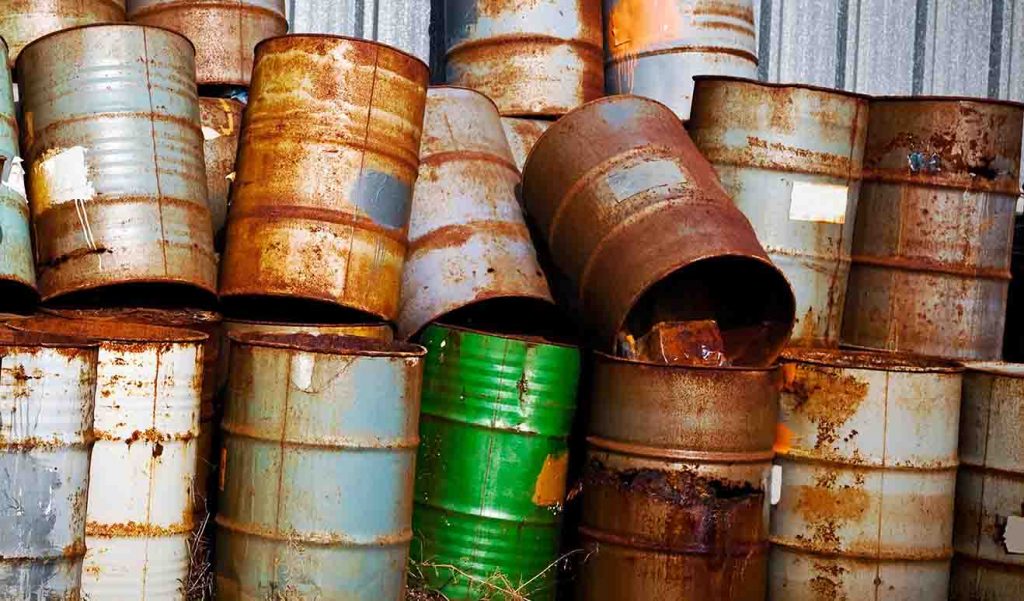There are many providers of containers out on the market, and it is not always easy to make sure that one makes the right choice for your business. Often customers focus on more than just the cheapest option, the environment also plays an important factor in the choice. You may have heard of triple bottom line? This means that companies are now increasingly focusing on the environment and contributing to a better society, as well as making money for the business. Companies solve this in different ways, for example by using a more environmentally friendly packaging.
Here are 8 reasons why plastic drums are more environmentally friendly than steel drums:
1. Plastic barrels require less energy during production:

A survey done in the US by the Global Environment
2. Plastic drums require less CO2 during the life cycle than steel drums: From the same survey, co2 consumption was seen to 1000 drums. Plastic drums require approx. 8630 kg/1000 drums, while steel drums require 86,080 kg/1,000 drums. This means that the life cycle of plastic drums has almost 90% lower CO2 emissions.
3. Lower weight: A 190L plastic drums as the CC container has a lower weight per unit than a steel drum. This leads to less fuel being required during shipping.
4. Highly polished with no transitions: Plastic drums are more suitable for reuse than steel drums as it is injection cast as a unit without seams and is highly polished. Thus, it can be easily cleaned. Reuse extends the life of each product, which is good for the environment.
5. Plastic has advantages that steel does not have:

Plastic drums have a greater resistance to getting dents, and can move back to original shape after dents if they are not too extensive. Plastic drums do not rust, which is a major problem in steel drums, especially if you are going to store over time in corrosive environments. Furthermore, plastic drums are less likely to go apart when it hits the ground since the drum is fully cast, while steel drums are made up of several parts and thus have weak attachment points. Benefits like this give the dish a longer lifespan, which is good for the environment.
6. Plastic drums have several uses: Plastic drums can be used for most of hazardous waste, food stuffs, drinking water and chemicals, without having to do any internal treatment other than thorough cleaning. Thus, you do not need to produce many drums for different uses, and CO2 emissions are reduced since one can have a container for many applications in-house in a business.
7. Space-saving and cost-effective: Most plastic drums can be stacked three in height, while steel drums must have pallets between each drum, making them take up more space both during shipping and during storage.

Moreover, steel drums cannot stand directly on each other because of their design. Companies can save a lot of money by switching to easy-to-stack plastic drums and stacking more in height without pallets under high ceilings. Mezonic's CC container is particularly suitable, since it is tapered shaped and can thus, when empty, be stacked five in each other and then reaches the same height as two empty steel drums. Thus, less CO2 will be required during transport since more containers are given into the same transmission.
8. The raw material plastic is better for the company and the environment than steel: The plastic material is 100% recyclable and can be used for other things when the container's life is over. Recycled plastic is highly sought after on the market. This is an incentive to recycle to a greater extent, which means we make better use of resources, it is good for the environment. The EU's new environmental goal is to "close the circle", i.e. we will make the most of the resources in the optimal way possible. This means that the end item should become raw material, which is a case of plastic drums.
Sources:
The survey "Comparative Environmental Study":
The Global Environmental and Technological Foundationhomepage :
